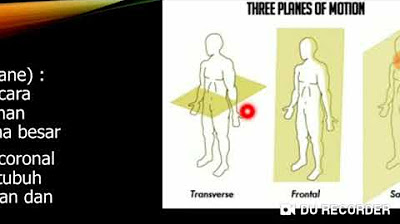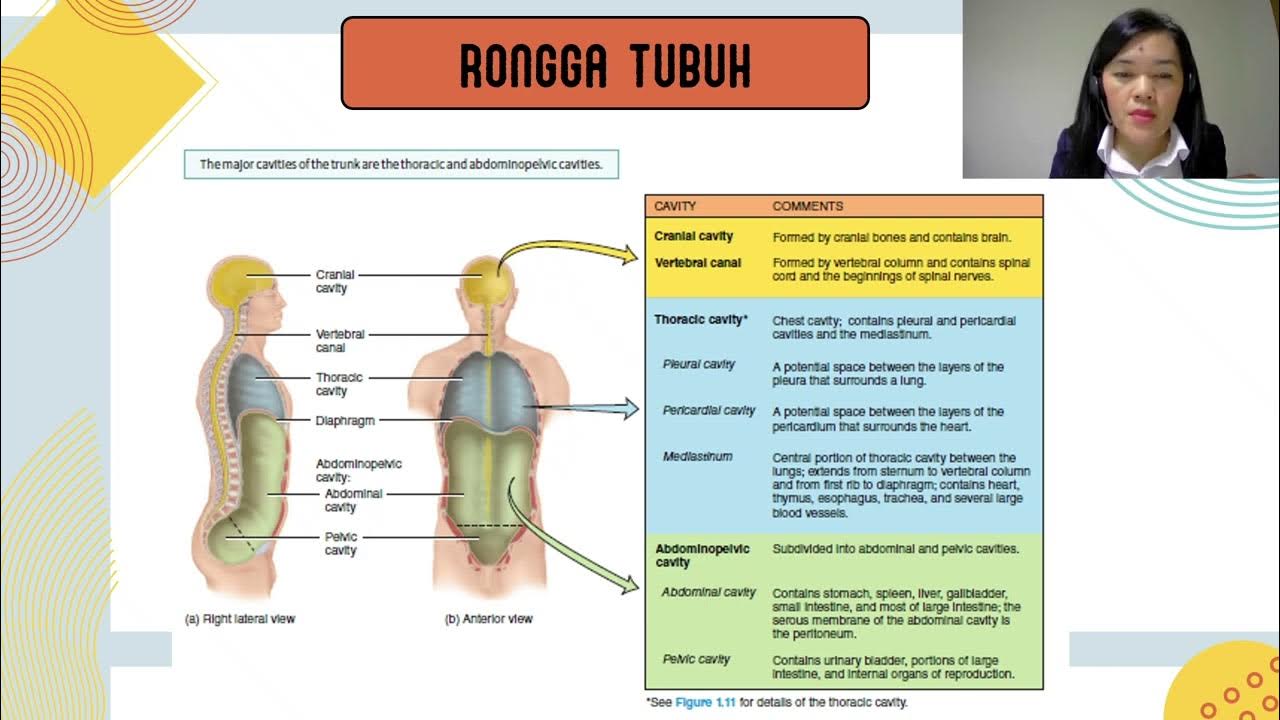Anatomical Terminology - Directional Terms
Summary
TLDRThis script introduces essential anatomical terminology for understanding the human body's directional terms. It defines key terms such as anterior, posterior, superior, inferior, medial, lateral, proximal, and distal, using examples like the pectoralis major and deltoid muscles, and the elbow and wrist to illustrate their meanings. The script also promotes an app for efficient learning, suggesting that becoming a professional in anatomy is just a few clicks away.
Takeaways
- 📌 Directional terms are crucial in anatomical terminology for understanding body parts and their positions.
- 🔍 'Anterior' refers to the front of the body or a structure, indicating a forward orientation.
- 🔄 'Posterior' is used to describe the back of the body or a structure, signifying a position towards the rear.
- 👆 'Superior' denotes a position towards the head or the upper part of a structure, indicating an upward direction.
- 👇 'Inferior' is the opposite of superior, pointing towards the lower part of a structure, or downward direction.
- 🤲 'Medial' indicates a position towards the midline of the body, or the inner side, often used to describe the relative position of anatomical structures.
- 🤚 'Lateral' means away from the midline of the body, or the outer side, and is used to describe structures that are further from the body's center.
- 💪 The pectoralis major muscle is an example of a medial structure, being closer to the body's midline.
- 🦿 The abductors of the leg are an example of a lateral structure, located on the outer side of the leg.
- 🔗 'Proximal' describes a position closer to the origin or point of reference, such as the elbow being proximal to the wrist.
- 📌 'Distal' is the reverse of proximal, indicating a position further from the origin or point of reference.
- 🚀 The script promotes an app for fast and easy learning, suggesting it can help users become professionals with ease.
Q & A
What does the term 'anterior' refer to in anatomical terminology?
-In anatomical terminology, 'anterior' refers to the front of the body or the front side of a structure.
What is the opposite term to 'anterior' when describing body parts?
-The opposite term to 'anterior' is 'posterior', which refers to the back or the rear side of the body or a structure.
Can you define the term 'superior' in the context of anatomical directionality?
-'Superior' in anatomical directionality means toward the head or the upper part of a structure.
What does 'inferior' indicate in relation to a body structure?
-'Inferior' indicates the lower part of a structure or the direction towards the feet.
What is meant by 'medial' in the context of body orientation?
-'Medial' refers to the direction toward or at the midline of the body, or the inner side of a structure.
How is 'lateral' different from 'medial' in anatomical terms?
-'Lateral' is the opposite of 'medial', indicating the direction away from the midline of the body or the outer side of a structure.
What does 'proximal' signify in relation to a point of reference?
-'Proximal' signifies being closer to the origin or the point of reference, typically the point closest to the trunk of the body.
How is 'distal' defined in anatomical terminology?
-'Distal' is defined as being further from the origin or point of reference, usually the point farthest from the body's trunk.
Can you provide an example of how 'medial' and 'lateral' are used in relation to specific muscles?
-The pectoralis major muscle is described as being 'medial' to the deltoid muscle, indicating its position closer to the body's midline. Conversely, the abductor muscles are on the 'lateral' aspect of the leg, meaning they are on the outer side.
What is the anatomical relationship between the elbow and the wrist in terms of 'proximal' and 'distal'?
-The elbow is described as 'proximal' to the wrist, meaning it is closer to the body's origin or trunk, while the wrist is 'distal', being further away from the trunk.
What does the transcript suggest about learning anatomical terminology?
-The transcript suggests that there is an app available for fast and easy learning of anatomical terminology, implying that becoming proficient in this area is accessible with the right tools.
Outlines

This section is available to paid users only. Please upgrade to access this part.
Upgrade NowMindmap

This section is available to paid users only. Please upgrade to access this part.
Upgrade NowKeywords

This section is available to paid users only. Please upgrade to access this part.
Upgrade NowHighlights

This section is available to paid users only. Please upgrade to access this part.
Upgrade NowTranscripts

This section is available to paid users only. Please upgrade to access this part.
Upgrade NowBrowse More Related Video

Anatomie Grundlagen - Lagebezeichnungen und Ebenen am Körper einfach erklärt

A&P I: chapter 1 orientation

Introduction Of Anatomy Sesi 2 - Putri Halleyana Adrikni Rahman, dr., M.Kes

ANATOMI GERAK MANUSIA (BAG. 1) : ISTILAH ARAH, BIDANG ANATOMIS DAN SUMBU ANATOMIS.

Istilah Arah Lokasi Anatomi

Anatomi Sel - Video 4
5.0 / 5 (0 votes)